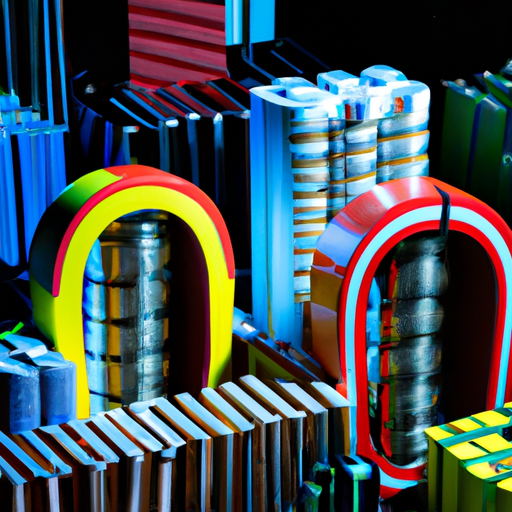

The mainstream production process of thin film capacitors is an advanced manufacturing technology for electronic components, which plays a crucial role in electronic products. Thin film capacitors are electronic components used for storing charge and energy, widely used in electronic devices, communication equipment, automotive electronics, medical devices, and other fields. Thin film capacitors have the advantages of small size, light weight, and stable performance, thus they are widely used in modern electronic products.

First is material preparation. The main materials of thin film capacitors include substrate materials, thin film materials, electrode materials, etc. Substrate materials are usually high-purity silicon wafers or glass substrates, thin film materials are usually high dielectric constant materials such as aluminum oxide, zirconium oxide, etc., and electrode materials are usually metals or conductive polymers. These materials need to undergo precise processing and treatment to ensure the stable and reliable performance of thin film capacitors.
Next is thin film deposition. The core component of thin film capacitors is the thin film, and the quality and performance of the thin film directly affect the performance of the capacitor. Thin film deposition is a key step in the preparation of thin film capacitors, usually using techniques such as physical vapor deposition (PVD) or chemical vapor deposition (CVD). During the thin film deposition process, parameters such as deposition rate, temperature, pressure, etc., need to be controlled to ensure the uniformity and density of the thin film.
Then comes thin film processing. The thin film of thin film capacitors needs to undergo precise processing, including cutting, punching, etching, etc. These processing steps require high-precision equipment and technology to ensure that the dimensions and shapes of the thin film meet the design requirements.
Next is electrode preparation. The electrode of thin film capacitors is a key component for connecting circuits, and the quality and performance of the electrode directly affect the performance of the capacitor. Electrode preparation usually involves techniques such as metal film deposition, photolithography, etching, etc., to prepare high-precision, high-reliability electrodes.
Finally, packaging. Thin film capacitors need to be packaged to protect the internal structure of the capacitor from external environmental influences. Packaging usually involves materials such as epoxy resin, silicone, etc., and processes such as injection molding, hot pressing, etc., to encapsulate the capacitor inside the shell.
In summary, the production process of thin film capacitors is a complex and precise technology that requires a high level of expertise and technology. With the continuous development and popularization of electronic products, the demand for thin film capacitors is also increasing. Therefore, research and development of the production process of thin film capacitors are of great significance. It is hoped that through continuous technological innovation and process improvement, higher performance and more reliable thin film capacitors can be produced to provide better support for the development and application of electronic products.
The mainstream production process of thin film capacitors is an advanced manufacturing technology for electronic components, which plays a crucial role in electronic products. Thin film capacitors are electronic components used for storing charge and energy, widely used in electronic devices, communication equipment, automotive electronics, medical devices, and other fields. Thin film capacitors have the advantages of small size, light weight, and stable performance, thus they are widely used in modern electronic products.

First is material preparation. The main materials of thin film capacitors include substrate materials, thin film materials, electrode materials, etc. Substrate materials are usually high-purity silicon wafers or glass substrates, thin film materials are usually high dielectric constant materials such as aluminum oxide, zirconium oxide, etc., and electrode materials are usually metals or conductive polymers. These materials need to undergo precise processing and treatment to ensure the stable and reliable performance of thin film capacitors.
Next is thin film deposition. The core component of thin film capacitors is the thin film, and the quality and performance of the thin film directly affect the performance of the capacitor. Thin film deposition is a key step in the preparation of thin film capacitors, usually using techniques such as physical vapor deposition (PVD) or chemical vapor deposition (CVD). During the thin film deposition process, parameters such as deposition rate, temperature, pressure, etc., need to be controlled to ensure the uniformity and density of the thin film.
Then comes thin film processing. The thin film of thin film capacitors needs to undergo precise processing, including cutting, punching, etching, etc. These processing steps require high-precision equipment and technology to ensure that the dimensions and shapes of the thin film meet the design requirements.
Next is electrode preparation. The electrode of thin film capacitors is a key component for connecting circuits, and the quality and performance of the electrode directly affect the performance of the capacitor. Electrode preparation usually involves techniques such as metal film deposition, photolithography, etching, etc., to prepare high-precision, high-reliability electrodes.
Finally, packaging. Thin film capacitors need to be packaged to protect the internal structure of the capacitor from external environmental influences. Packaging usually involves materials such as epoxy resin, silicone, etc., and processes such as injection molding, hot pressing, etc., to encapsulate the capacitor inside the shell.
In summary, the production process of thin film capacitors is a complex and precise technology that requires a high level of expertise and technology. With the continuous development and popularization of electronic products, the demand for thin film capacitors is also increasing. Therefore, research and development of the production process of thin film capacitors are of great significance. It is hoped that through continuous technological innovation and process improvement, higher performance and more reliable thin film capacitors can be produced to provide better support for the development and application of electronic products.